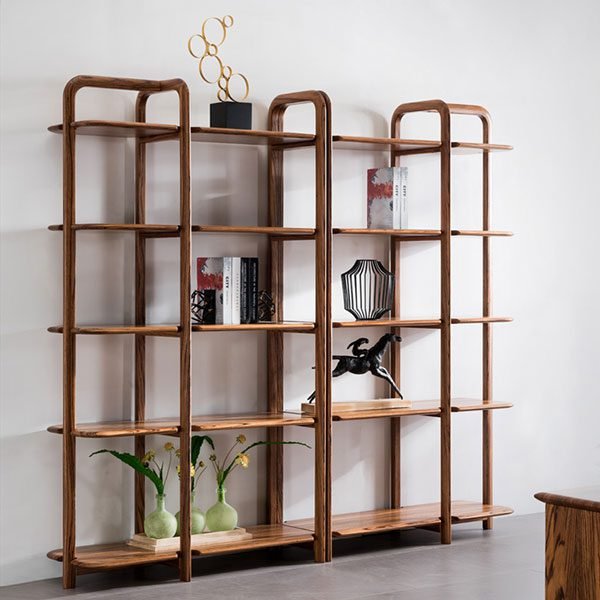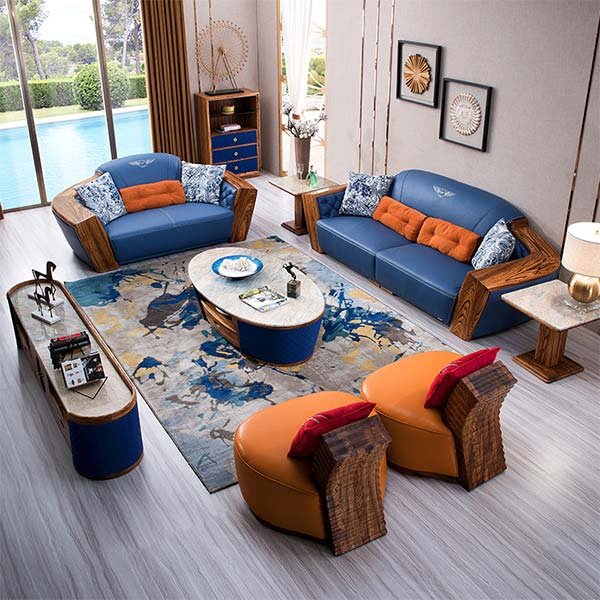Durability: Fabric vs. Leather
When it comes to choosing the perfect sofa for your living room, durability is a crucial factor to consider. After all, you want a sofa that will withstand the test of time and daily use. Two popular options for upholstery materials are fabric and leather. Each has its own set of pros and cons when it comes to durability.
Fabric sofas are known for their versatility and wide range of options. They come in various colors, patterns, and textures, allowing you to find the perfect match for your home decor. However, when it comes to durability, fabric sofas may not be as resilient as their leather counterparts.
One of the main advantages of fabric sofas is their affordability. They tend to be less expensive than leather sofas, making them a popular choice for budget-conscious consumers. However, the lower price tag often comes with a trade-off in terms of durability. Fabric sofas are more prone to wear and tear, especially in high-traffic areas. The fabric can become frayed, stained, or faded over time, requiring more frequent maintenance and potentially needing to be replaced sooner.
That being said, not all fabric sofas are created equal. Some fabrics, such as microfiber or tightly woven synthetic materials, are more resistant to stains and fading. Additionally, certain fabric sofas come with removable and washable covers, making them easier to clean and maintain. It’s important to consider the specific fabric used in the sofa you are considering, as well as the level of care it requires.
On the other hand, leather sofas are renowned for their durability and timeless appeal. Leather is a natural material that is known to age beautifully, developing a unique patina over time. It is highly resistant to stains and spills, making it an excellent choice for households with children or pets. Leather sofas are also less likely to show signs of wear and tear, such as sagging or pilling.
However, leather sofas do have their drawbacks when it comes to durability. They tend to be more expensive than fabric sofas, which can be a deterrent for some buyers. Additionally, leather requires regular maintenance to keep it looking its best. It needs to be cleaned and conditioned periodically to prevent drying out and cracking. While leather is generally more resistant to stains, certain substances like ink or sharp objects can cause permanent damage.
In conclusion, when considering the durability of fabric vs. leather sofas, it’s important to weigh the pros and cons of each material. Fabric sofas offer a wide range of options at an affordable price, but they may require more maintenance and have a shorter lifespan. Leather sofas, on the other hand, are known for their durability and timeless appeal, but they come with a higher price tag and require regular maintenance. Ultimately, the choice between fabric and leather will depend on your personal preferences, budget, and lifestyle.
Comfort: Fabric vs. Leather
When it comes to choosing the perfect sofa for your living room, comfort is undoubtedly one of the most important factors to consider. After all, a sofa is not just a piece of furniture; it is a place where you relax, unwind, and spend quality time with your loved ones. Two popular options that often come to mind are fabric and leather sofas. Both have their own unique advantages and disadvantages, and it’s essential to weigh them carefully before making a decision.
Fabric sofas are known for their cozy and inviting feel. The softness and warmth of fabric make it a popular choice for those seeking ultimate comfort. Fabric sofas come in a wide range of colors, patterns, and textures, allowing you to find the perfect match for your interior decor. Additionally, fabric is generally more affordable than leather, making it an attractive option for budget-conscious buyers.
One of the main advantages of fabric sofas is their ability to adapt to different temperatures. Unlike leather, fabric does not become too hot or too cold, making it suitable for all seasons. Moreover, fabric is less prone to scratches and scuffs, making it a great choice for households with pets or young children. It is also easier to clean and maintain, as most fabric sofas come with removable and washable covers.
However, fabric sofas do have their downsides. One of the most significant disadvantages is their susceptibility to stains and spills. While some fabrics are treated with stain-resistant coatings, accidents can still happen, and it may be challenging to remove stubborn stains. Additionally, fabric sofas tend to accumulate dust and allergens more easily, which can be problematic for individuals with allergies or respiratory issues.
On the other hand, leather sofas exude a sense of luxury and sophistication. They are often associated with elegance and timeless style. Leather sofas are known for their durability and longevity, making them a wise investment for those looking for a long-term furniture solution. Leather also develops a beautiful patina over time, adding character and charm to your living space.
One of the main advantages of leather sofas is their easy maintenance. Unlike fabric, leather is resistant to stains and spills, making it a practical choice for households with children or pets. A simple wipe with a damp cloth is usually enough to keep a leather sofa looking clean and fresh. Additionally, leather is less likely to trap dust and allergens, making it a healthier option for individuals with allergies.
However, leather sofas also have their drawbacks. They tend to be more expensive than fabric sofas, which can be a deterrent for some buyers. Moreover, leather can feel cold and sticky in hot weather and may require additional cushions or throws for added comfort. Leather is also more prone to scratches and can fade or crack over time if not properly cared for.
In conclusion, when it comes to choosing between fabric and leather sofas, comfort is a crucial factor to consider. Fabric sofas offer a cozy and inviting feel, with a wide range of options to suit any interior decor. They are generally more affordable and easier to clean. On the other hand, leather sofas exude luxury and durability, with easy maintenance and a timeless appeal. Ultimately, the choice between fabric and leather comes down to personal preference, budget, and lifestyle. So take your time, test them out, and choose the sofa that will provide you with the utmost comfort and satisfaction for years to come.
Maintenance: Fabric vs. Leather
When it comes to choosing the perfect sofa for your living room, one of the key factors to consider is maintenance. After all, you want a sofa that not only looks great but also stands the test of time. In this section, we will explore the pros and cons of fabric and leather sofas in terms of maintenance.
Let’s start with fabric sofas. One of the main advantages of fabric is that it is generally easier to clean. Most fabric sofas come with removable covers that can be machine-washed or dry-cleaned, making it convenient to keep them looking fresh and clean. Additionally, fabric is less prone to scratches and scuffs, making it a good option for households with pets or young children.
However, fabric sofas do have their downsides when it comes to maintenance. One of the biggest challenges with fabric is that it tends to absorb spills and stains more easily than leather. This means that you need to act quickly to prevent permanent damage. It’s also important to note that certain types of fabric, such as silk or velvet, may require professional cleaning, which can be costly.
Now let’s turn our attention to leather sofas. Leather is known for its durability and longevity, making it a popular choice for those seeking a low-maintenance option. Unlike fabric, leather is resistant to stains and spills, making it easier to clean. In most cases, a simple wipe with a damp cloth is all it takes to remove any dirt or spills. Leather sofas also tend to age well, developing a beautiful patina over time.
However, leather sofas do require some special care to maintain their appearance. Regular conditioning is necessary to prevent the leather from drying out and cracking. This can be done using a leather conditioner or cream, which helps to keep the leather soft and supple. It’s also important to keep leather sofas away from direct sunlight and heat sources, as these can cause the leather to fade or become damaged.
In terms of maintenance, both fabric and leather sofas have their pros and cons. Fabric sofas are generally easier to clean and less prone to scratches, but they may require more frequent cleaning and can be more susceptible to stains. On the other hand, leather sofas are more durable and resistant to stains, but they require regular conditioning and need to be protected from sunlight and heat.
Ultimately, the choice between fabric and leather for your ideal sofa comes down to personal preference and lifestyle. If you have a busy household with pets or children, a fabric sofa may be a more practical option. However, if you prioritize durability and a timeless look, a leather sofa may be the way to go.
In conclusion, when considering maintenance for your ideal sofa, it’s important to weigh the pros and cons of fabric and leather. Both options have their advantages and disadvantages, so it’s essential to choose the one that best suits your needs and lifestyle. By taking proper care of your sofa, whether it’s fabric or leather, you can ensure that it remains a beautiful and comfortable centerpiece in your living room for years to come.
Conclusion
In conclusion, choosing between fabric and leather for your ideal sofa depends on your personal preferences and needs. Fabric sofas offer a wide range of colors, patterns, and textures, are generally more affordable, and can be easier to clean. On the other hand, leather sofas provide a luxurious and timeless look, are durable and long-lasting, and can be easier to maintain. Consider factors such as comfort, durability, style, and budget when making your decision.



